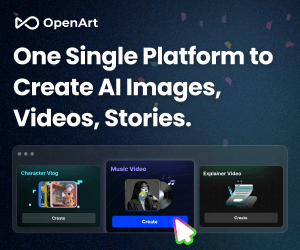The world is living through an artificial intelligence revolution, one that promises to radically change how people work, communicate, invent, and imagine. AI is at the center of business, technology, and culture, with eye-popping valuation numbers and massive infrastructure investments dominating headlines. Yet as with every revolution, doubts remain. Is this a paradigm shift — or the latest speculative bubble destined to burst?
What is the AI Bubble?
The “AI bubble” is a theorized period of unsustainable growth and valuation in AI-related companies and infrastructure, marked by rapid technological progress, aggressive capital inflows, and sky-high expectations for the sector. The surge began in the late 2010s and went global in the early 2020s, driven by breakthroughs in generative AI, large language models, and machine learning across fields like healthcare, finance, and creative industries. Every major tech company — Microsoft, Google, Amazon, Meta, Oracle — has allocated enormous budgets to data centers, chips, and software, with US AI spending projected to exceed $500 billion a year by 2026.
But questions linger about whether the sector’s growth and valuations are justified by tangible revenue or economic benefit — a classic warning sign of a speculative bubble.
Roots of the Bubble: Hype and Investment
Unlike previous AI winters, the present era — sometimes called an “AI spring” — has attracted sustained optimism and unprecedented financial involvement. Companies and investors have rushed to claim the transformative potential of AI, leading to massive infrastructure builds such as hyperscale data centers and next-generation GPU clusters.
Valuations have soared. OpenAI, creator of ChatGPT, reached a $500 billion value barely two years after launching its product, while AI startups routinely attract seed rounds in the billions — even without releasing a product or revealing a business model. Meme stocks, retail investing surges, and social media hype fuel the frenzy.
Yet, as the Wall Street Journal reported, American consumers themselves spend only $12 billion annually on AI services. That’s dwarfed by the hundreds of billions poured into infrastructure, suggesting a chasm between vision and current reality.
Signs of Trouble: Cracks Beneath the Surface
Financial and business experts are sounding alarms. The following warning signals have emerged:
Infrastructure overspending: Tech giants are building data centers and buying chips at historic, even unprecedented, scales. Some analysts compare this phase to the buildout of “dark fiber” during the dot-com boom, where companies laid millions of miles of fiber optic cable that went unused for years.
Faulty business models: Many AI companies have generated little or no revenue despite enormous valuations, echoing the story of dot-com era firms like Pets.com and TheGlobe.com who spent fortunes without solid business plans.
Declining adoption: A recent U.S. Census Bureau report shows AI adoption may be peaking and beginning to decline, which could signal trouble for sustained growth and profitability.
Return on investment concerns: In 2025, an MIT study found that 95% of organizations deploying enterprise AI were getting zero return, triggering a $1 trillion market drop in days.
Financial fiction: The largest AI players allegedly use accounting tricks and “special purpose vehicles” (SPVs) to disguise true spending, inflating profitability and masking structural risks.
Historical Parallels: What Past Bubbles Teach Us
Big technological revolutions, from 19th-century railroads to the dot-com boom, share similar bubble patterns:
Breakthrough technology emerges with credible potential for world-changing impact.
Capital floods in, accelerating progress while driving valuations beyond reasonable levels.
Speculative excess takes over, with decisions focusing more on hype than utility or fundamentals.
A dramatic collapse comes when fundamentals fail to support expectations and prices.
The dot-com bubble is instructive. Companies poured money into internet infrastructure and speculative startups. When economic realities set in — higher interest rates, recession, and poor business models — stocks collapsed. Yet the “wreckage” of the boom became the backbone of the next generation of internet giants.
How Might the AI Bubble Burst?
The AI bubble could burst through a combination of factors, including:
Economic downturn: Rising interest rates or recession could force investors to seek safer assets, draining the capital pool for high-risk AI ventures.
Realization of unsustainable business models: If too many AI projects fail to deliver meaningful returns, investors may rapidly reassess valuations, leading to a crash.
Regulatory shifts: New rules around data, privacy, energy use, or monopolistic practices could curtail innovation and infrastructure buildouts.
External shocks: Events like global financial instability or geopolitical shifts could trigger a rapid loss of confidence.
“No one knows exactly what will pop the bubble, but sharp changes in investor sentiment or major economic shocks have historically triggered dramatic corrections,” says financial historian Jeremy Grantham.
What Comes After: Life Post-Bubble
If the AI bubble bursts, the effects will reverberate globally:
Infrastructure remains: Much like the fiber optic cables of the dot-com collapse, the massive data centers and GPU clusters built today will become the backbone for future innovation at lower cost.
Industry shakeout: Weak companies with unsustainable business models may merge or vanish. Surviving firms could emerge stronger and more focused on creating real value and solving specific problems.
Market correction: Valuations and funding will decline, but new, nimble entrants — both startups and open-source technologies — may thrive with access to heavily discounted infrastructure.
Innovation shifts: The industry focus will move from broad speculation (promising "God in a box") toward applied, problem-solving solutions and products that demonstrably work.
Lessons for Investors, Innovators, and Society
The AI hype cycle contains risks, but offers opportunities as well.
Speculators may lose fortunes, but foundational infrastructure built during the boom will be available for the next wave of real innovation.
The transition period could see layoffs, consolidations, and disruptions in adjacent industries, impacting everything from energy use and manufacturing to education and retail.
Society stands to benefit if the correction forces a focus on genuine technological utility — shifting from profit-driven expansion toward solving pressing human needs.
Is AI Doomed or Destined?
History shows that every important technological innovation experiences a bubble. The same forces that push valuations sky-high also lay the groundwork for world-changing progress — but only over time, with patience and sober strategy.
AI will not disappear if a bubble bursts. Instead, the landscape will shift, rewarding companies and creators who deliver tangible value grounded in reality, not hype. The infrastructure built may become the soil from which lasting progress and new giants grow, just as the fiber networks of the 1990s enabled today's internet ecosystem.
In the meantime, investors, innovators, and policymakers must remain vigilant, balancing cautious optimism with critical scrutiny. The AI era has already changed the rules — the next chapter will test which advances are truly sustainable, and what future society builds from both the rubble and the riches.
LATEST BLOG POSTS
© businesshub360.systeme.io
All rights reserved



